Sawdust and synapses
A brief digression into my woodworking.
This post is a little different. I am fortunate to be part of this year’s Roots of Progress Blog-Building Fellowship. The last few essays, and the next few to come, are products of the fellowship. This one grew out of an assignment to write a personal essay. Enjoy!
I love working with my hands. At work, that means building microscopes from scratch or manipulating rice-sized biological samples in liquid nitrogen. At home, it means carving intricate designs in wood.
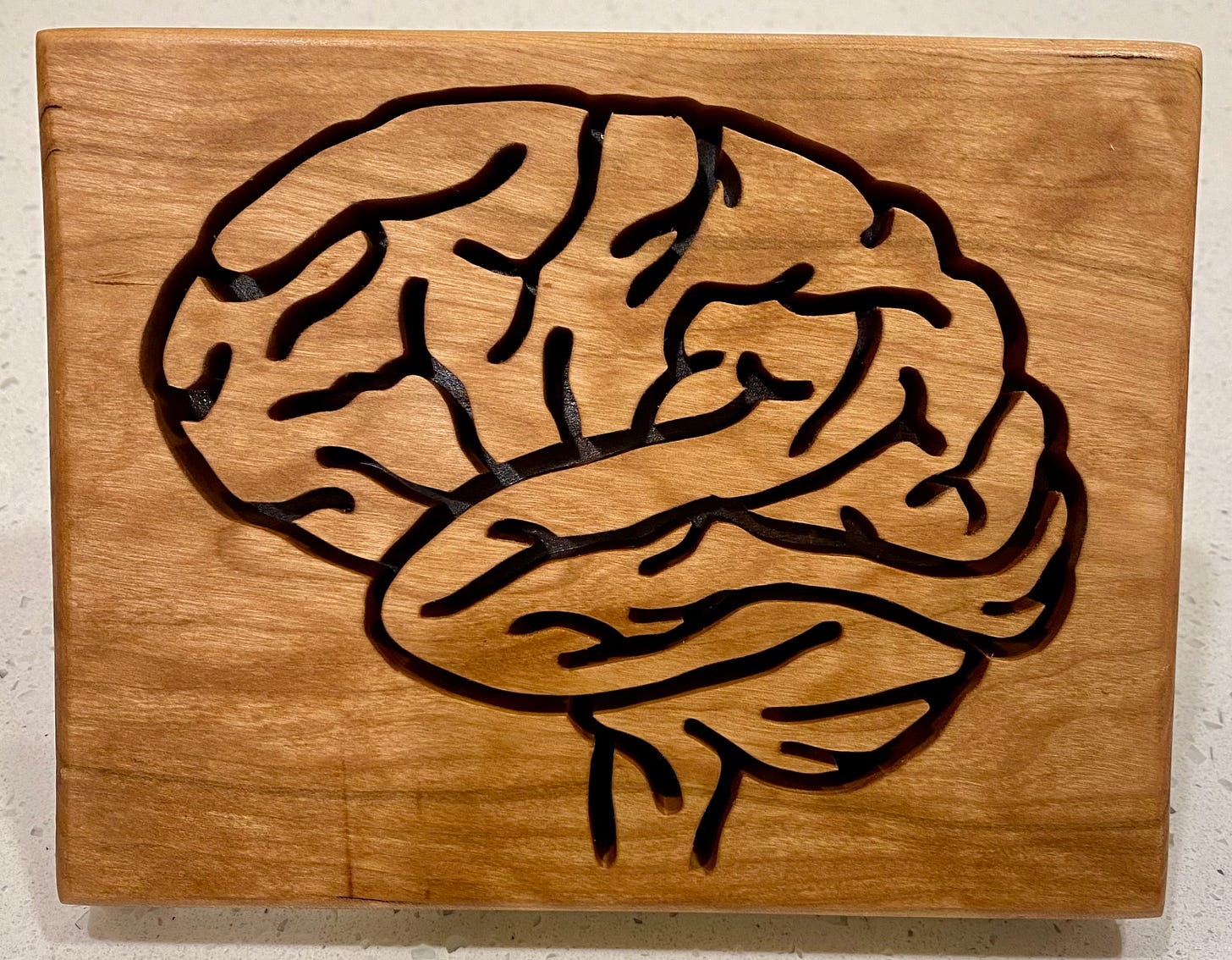
You don’t need much to start woodworking. You need some space, you need YouTube, a few basic tools, and a bit of wood.
When I first began woodworking, we lived in a one-bedroom apartment and our office doubled as our “workshop”. For the really dusty jobs, we moved into the bathroom so sawdust wouldn’t sneak into our bookshelves. A few years later we upgraded to a home with a garage, and I was thrilled to discover the built-in pegboards, until it was pointed out that most American garages probably have pegboards.
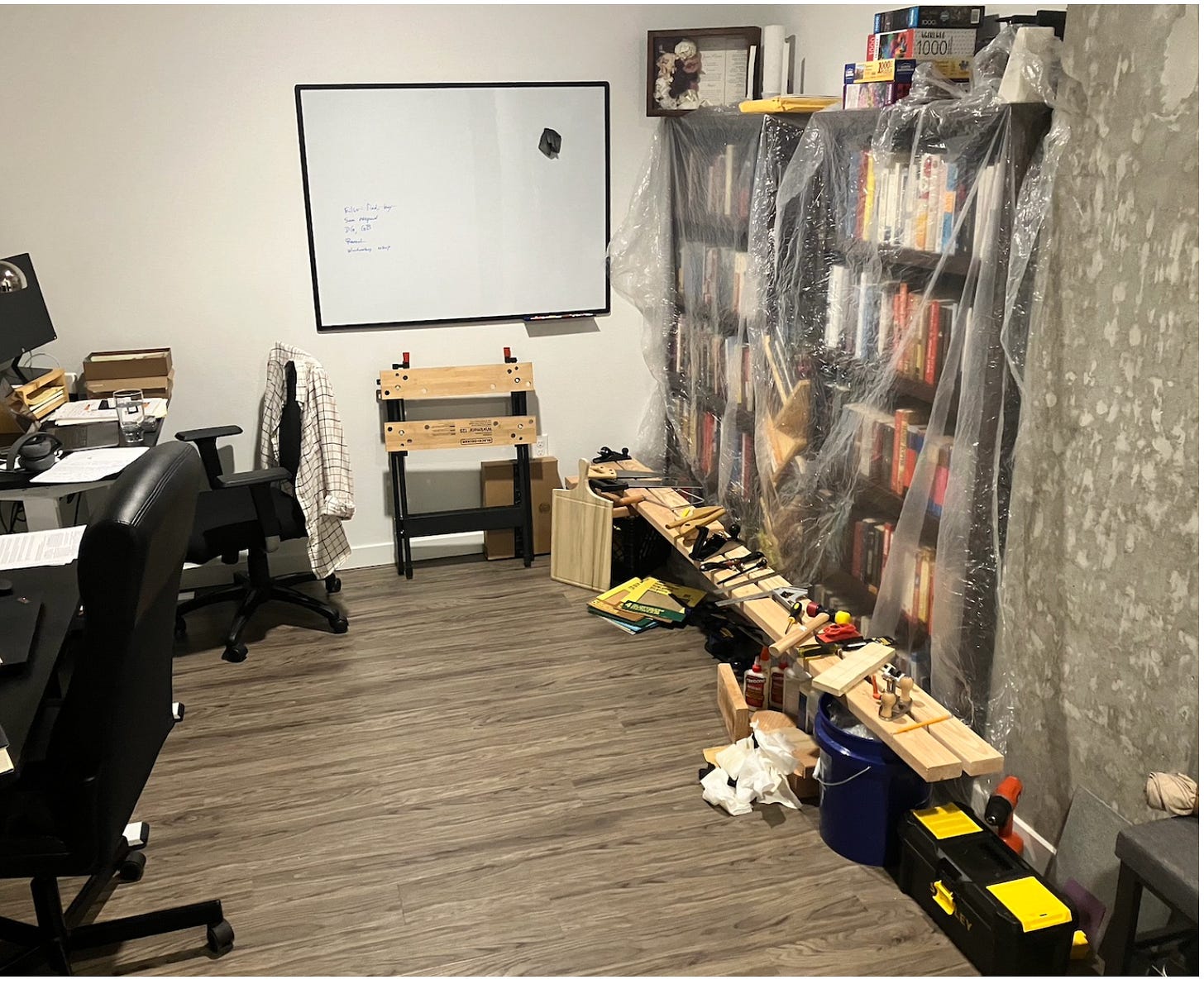
The next thing you need is a teacher, and YouTube is full of them. One of my favorites is Paul Sellers, a hand-tool woodworker who has been teaching for decades. His calm, precise, British lecturing style is a joy to watch on its own. He even built cabinets that now live in the White House.
In terms of tools, if you were to, say, start with making a basic cutting board, all you need is a saw, a spokeshave, sandpaper, and some finishing oil. That’s it. If you want to get fancy, by adding a handle, you will also need a coping saw and a rasp.
Then there’s the wood itself. The decision to make is softwood or hardwood. Softwood cuts more easily, but hardwood looks far better when finished. Think pine versus mahogany.
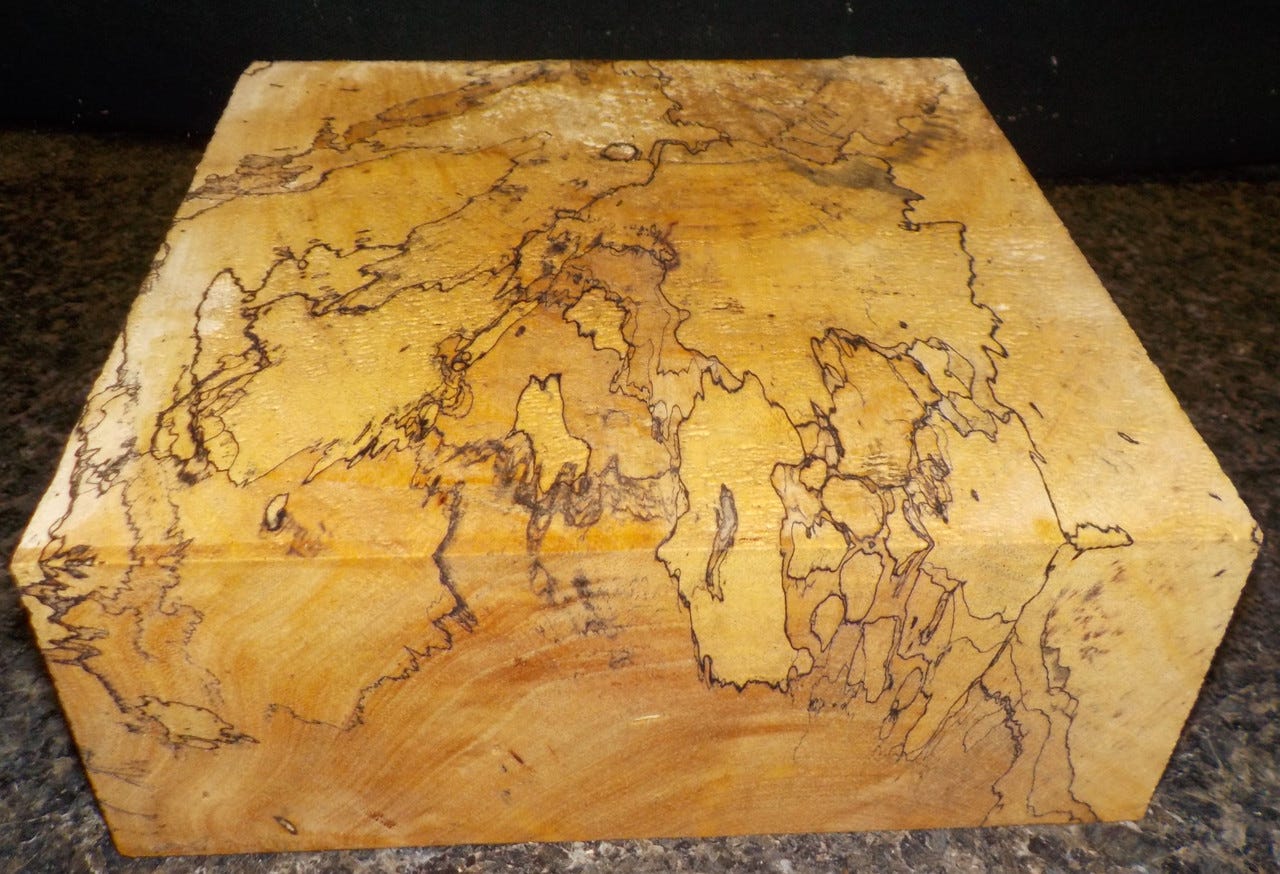
I’m not going to write a tutorial here. For that, I’ll point you to Paul’s videos. Nothing I can say would beat just watching him work.
When we moved into a place with a garage, the first thing we did was build a workbench. There was something deeply satisfying about this: building the tool that allows you to create. This mirrors strongly with how I approach my science: building my instruments that allow me to answer questions in new ways.
Other projects followed: bar stools, coasters, spatulas. I stayed in the hand-tool world until I came across Neurowoodworks on X, posting wooden neurons. I was hooked instantly. After much back and forth, I was finally making neurons of my own.
At first, I thought a bandsaw would do the job, and we already had one at home. I learned the hard way that it would not. A bandsaw is like the highway: it’s made for long, straight cuts and gentle curves. It’s fast, powerful, and great if you need to rip a piece of wood down the middle. But try to cut the tight twists of a neuron with one, and it might feel like trying to parallel park a semi-truck (I can only imagine). The blade just doesn’t turn tightly enough, and before you know it, you’ve either broken your piece or veered way off your line.
The scroll saw, on the other hand, is like having a fine-point pen. Its thin blade moves up and down, so you can swivel your wood in place and steer through hairpin curves. That way you get the delicate branches of a dendrite without shredding your work. Not long after I found a used scroll saw on Facebook Marketplace.
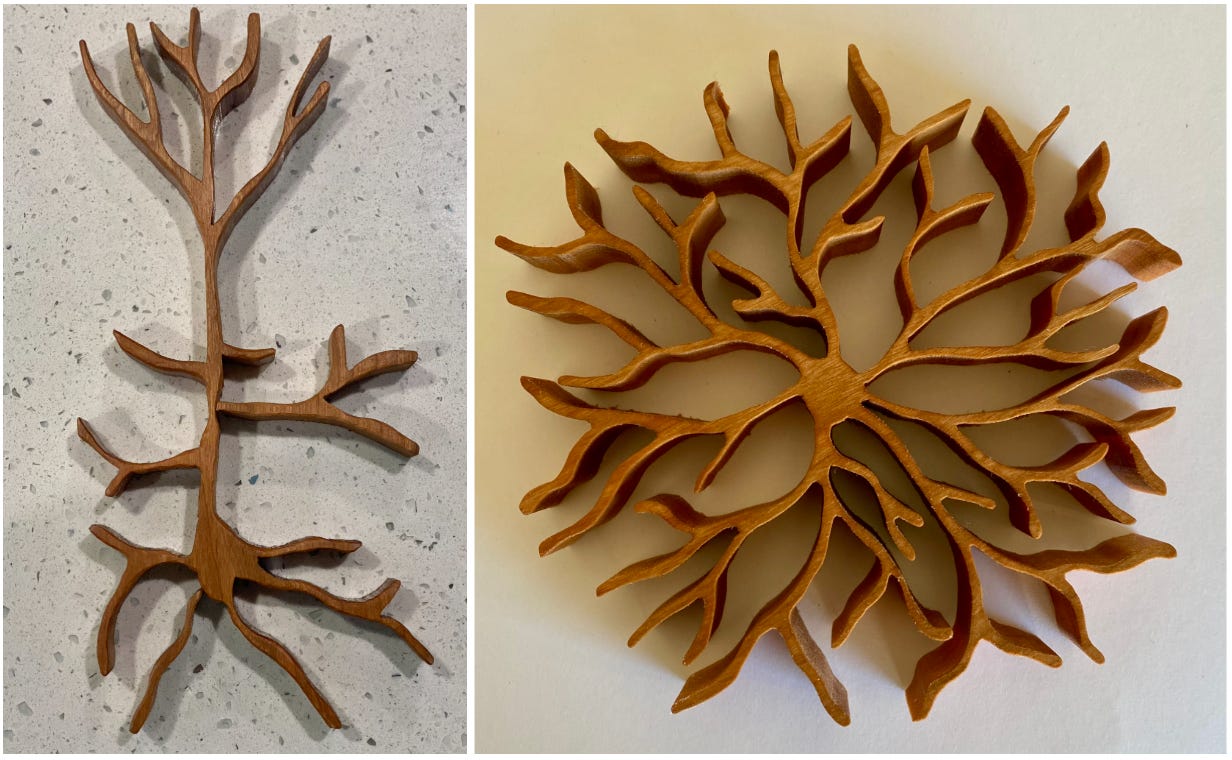
When I am working with the scroll saw, nothing else matters. The sound of the motor pulsing the blade, the soft vibrations of the wood beneath my hands, the smell of freshly cut lumber. The minutes certainly slip into hours. The pull of the wood along the blade makes it feel less like I’m making something but more like being carried along with it.
Once I got through a few neurons, I started venturing into more creative projects. My most intricate piece yet is inspired by the Mandelbrot set. I hope to turn it into a bedside lamp for my daughter’s bedroom.
For me, woodworking is another outlet for creativity, learning, focus, and making something real and tangible. There is a deep satisfaction in seeing something take form under your fingertips, whether this is building microscopes, or typing code, or carving wood, a feedback loop between thought and action.
A timelapse of building our workbench:


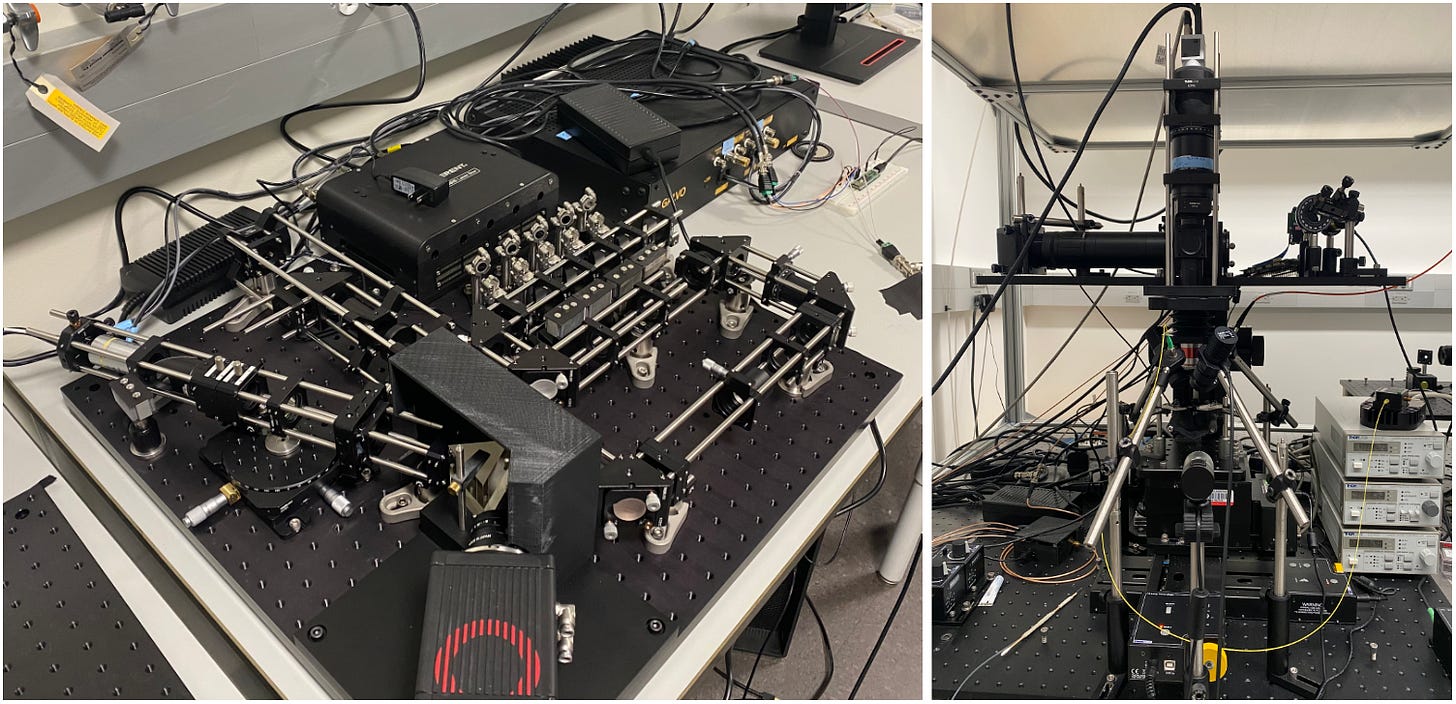
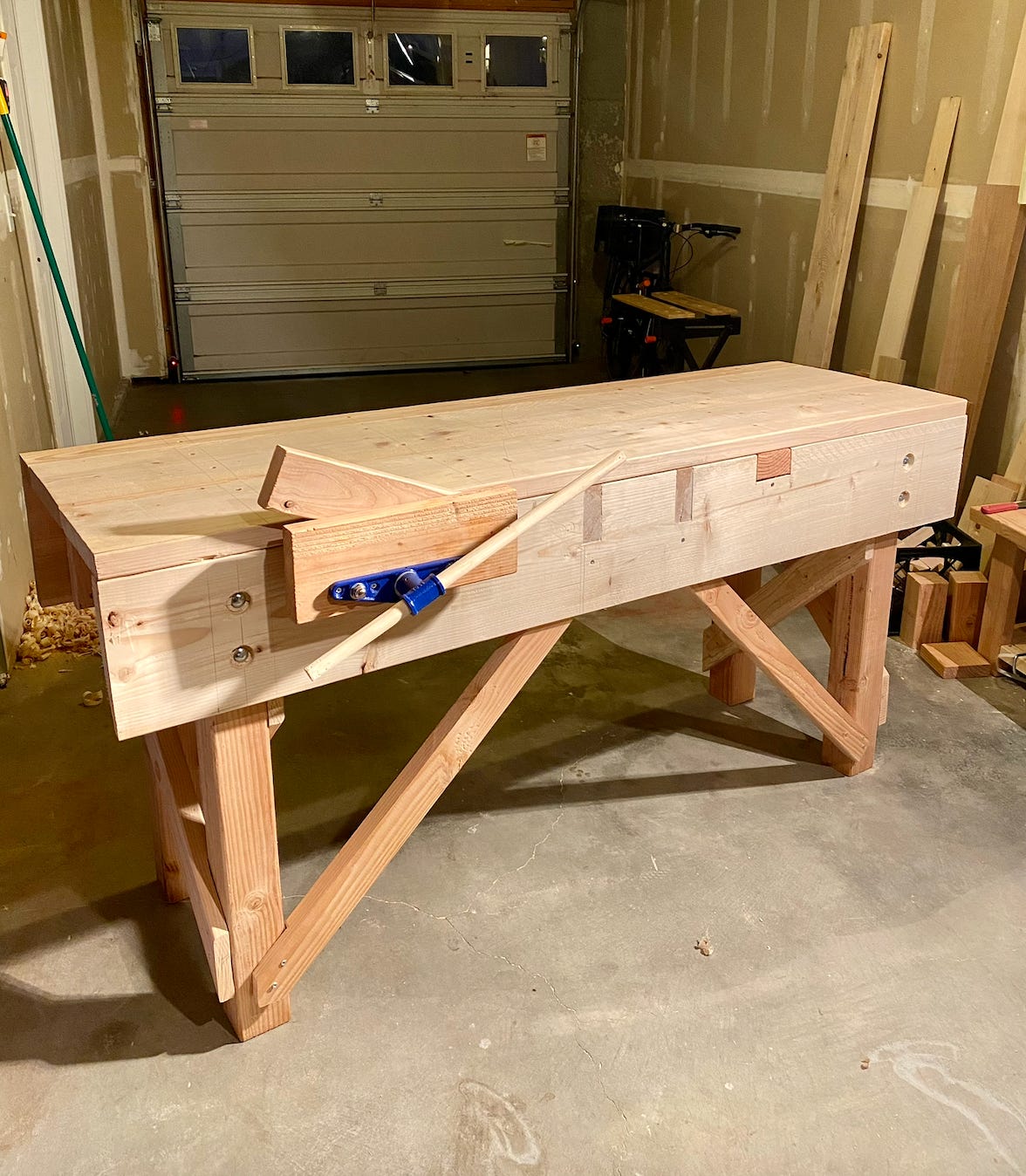
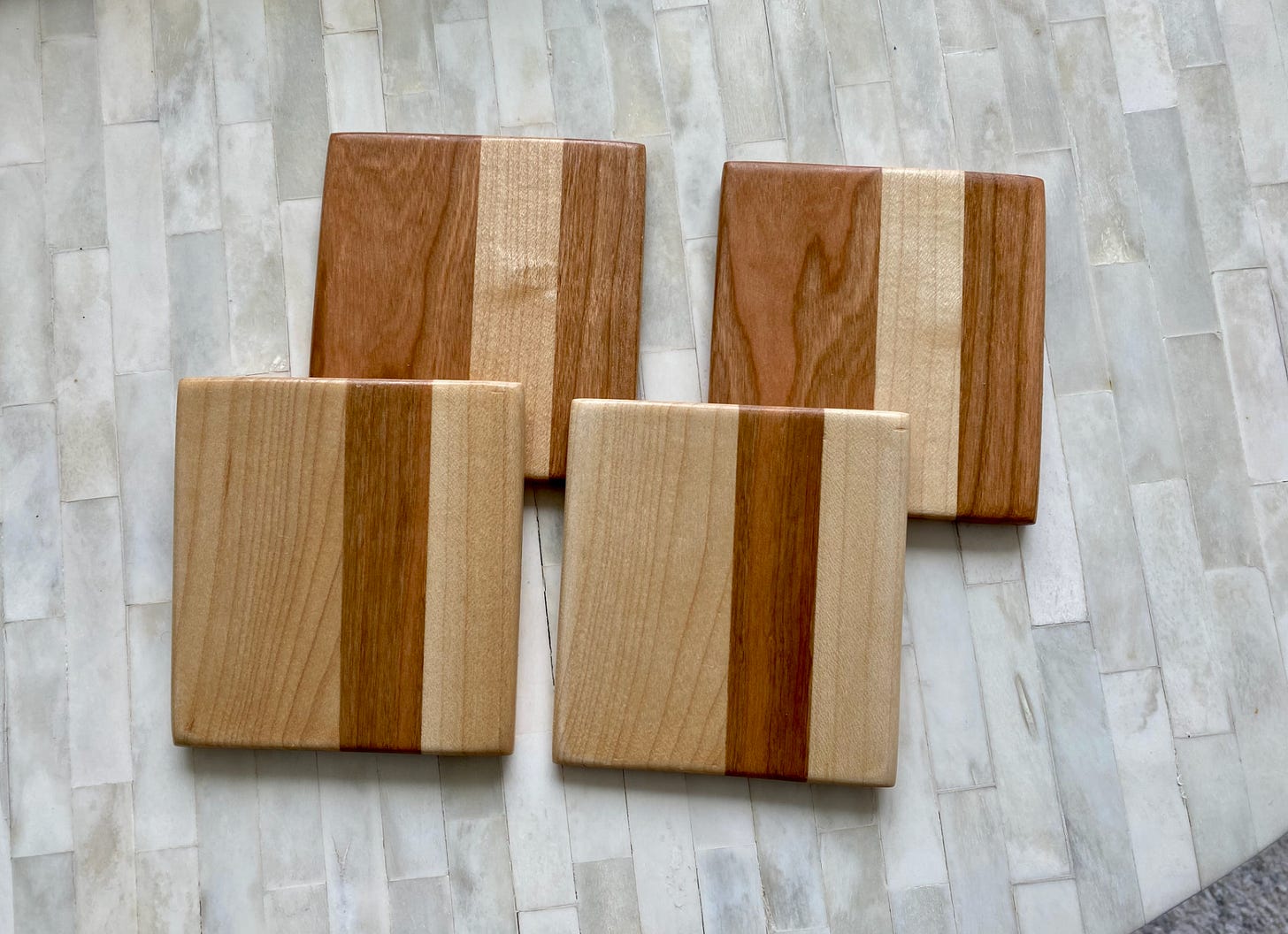
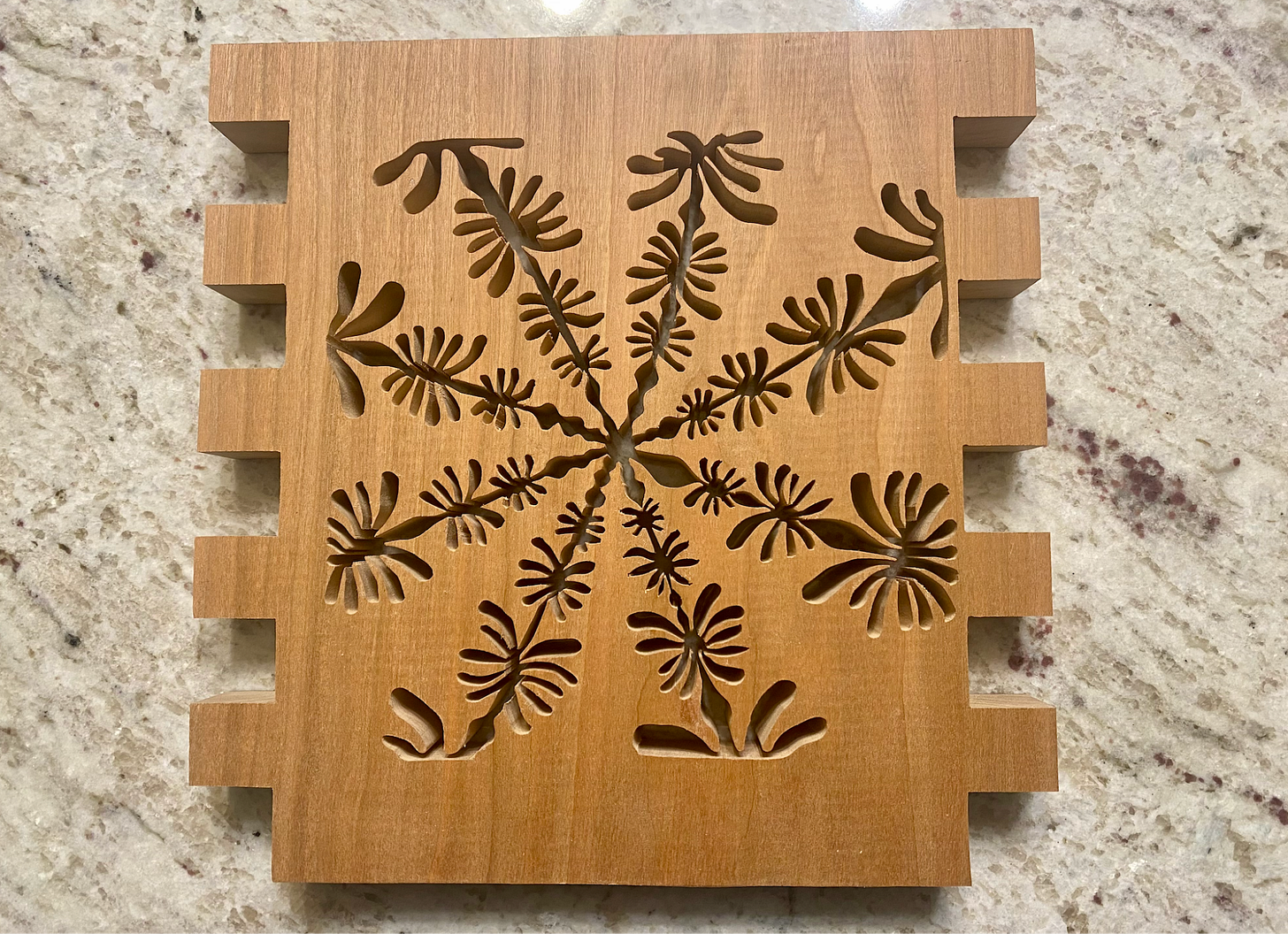
I love this post. And I agree with Abby that it would be amazing to see more of your woodworking
this is so cool! especially love the neuron and astrocyte ones. also insanely cool that you build microscopes at work 🤯 how did you first discover woodworking?